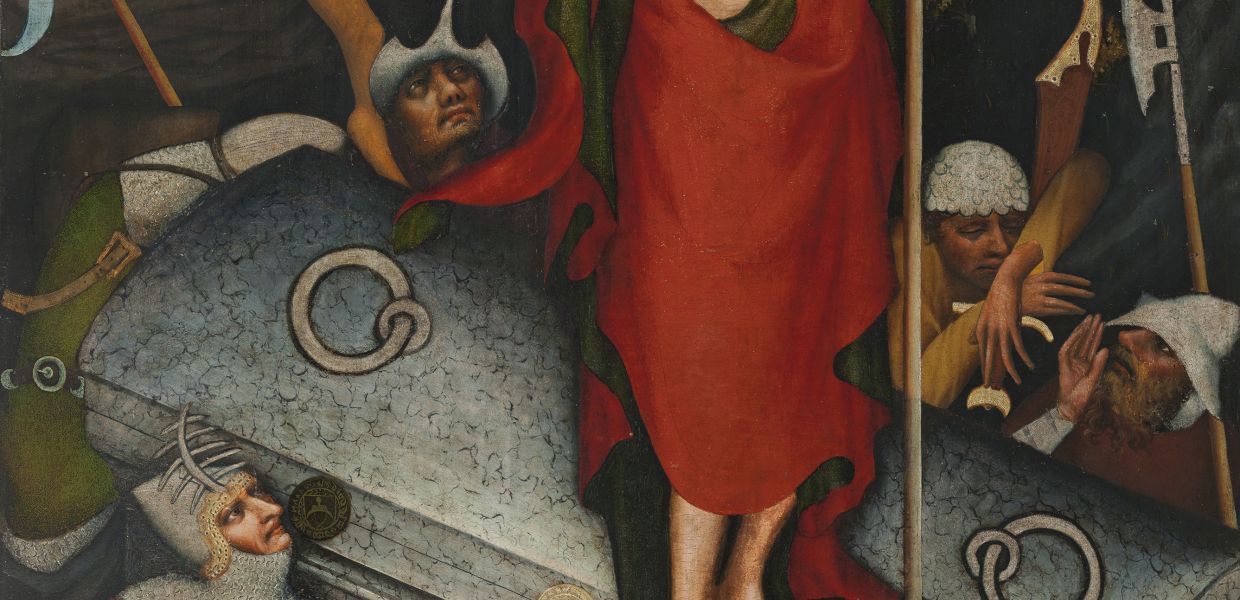Choosing a country's artworks for Europeana 280: Czech Republic

This month, we’ve started highlighting some of the works nominated as part of Europeana 280 in preparation for the launch of the campaign next month. On Europeana Art History Collections, we’ll showcase treasures from a different country each week, and if you download the popular app DailyArt, you can enjoy a Europeana 280 artwork every Tuesday and Sunday in March.
We’ll also continue this blog series, finding out more how different countries went about making their choices. Here, Europeana 280's Exhibition Coordinator Ann Maher highlights nominations from the Czech Republic.
Bordered by Germany, Austria, Slovakia and Poland, and including the historical lands of Bohemia, Moravia and Bohemian Silesia, the Czech Republic has absorbed many artistic influences that are reflected in some fascinating nominations for Europeana 280.
Jaromíra Mizerová, Head of the EU Division at the Czech Republic Ministry of Culture, told us a little more about how the works were selected: “After the original call for nominations, the department for museums and galleries contacted national institutions to submit their proposals. A list of selected objects was presented to the Council of the Ministry and the Minister of Culture confirmed the final ten objects.” So what are some highlights from the Czech selection?
Holy Roman Emperors and Kings of Bohemia
In the fourteenth century, Charles IV (1316-1378) was the first King of Bohemia to also become Holy Roman Emperor. Well-travelled, well-educated and well-connected to royal courts, artistic endeavors flourished in his reign.
His court painter was Master Theodoric and one of his works, Painting of St Jude Thaddaeus, is a nomination from the National Heritage Institute. It's one of over 100 sumptuously decorated panels painted in the Chapel of the Holy Cross at the royal residence Karlštejn Castle, near Prague.
A Bohemian Gothic panel painting regarded as the beginning of the ‘beautiful style’ – a specific Central European variant of the ‘International style’, according to the National Gallery in Prague, comes from the Augustinian monastery‘s Church of St Giles in Třeboň (South Bohemia) and is featured below. The international gothic style was stimulated by the growing cultural rivalry of European royal courts.

The Třeboň Altarpiece Resurrection, Master of the Třeboň Altarpiece, The National Gallery in Prague, CC BY NC-SA. The elegant forms and naturalistic detail of the triptych depicting the death and resurrection of Christ, from a church in the medieval town of Trebon (in German, Wittingau) in southern Bohemia, are regarded as characteristic of the ‘beautiful style’, a variant of the ‘international style’ of gothic art.
Prague was the centre of the Holy Roman Empire once again in the 16th century, at the time of Habsburg ruler Rudolf II; Arcimboldo’s unusual portrait of that unusual monarch is a Europeana 280 nomination from Sweden.
But the period between these two Holy Roman Emperors, (and many of the following years), was marked by conflict and wars between Catholic and Protestant states. The religious reformations that swept across Europe in the 16th century had an earlier precedent in the Czech Reformation of the 15th century. Its dominant figure was Jan Hus, who was burnt at the stake in 1415. His martyrdom is recorded in The Altar Wings of Roudníky, which was discovered in 1966, a selection from the Hussite Museum of Tábor.
Bohemian Baroque
Protestant Karel Škréta, one of the most important figures in Bohemian Baroque, fled Prague at the time of the Thirty Years War and eventually made his way to Italy in the 1630s. According to the National Gallery in Prague, Škréta’s “intimate acquaintance with Venetian art had a profound impact and lasting influence on his oeuvre”.
When he moved on to Rome, he joined an unusual group of Dutch and Flemish artists called the Bentvueghels (Dutch for ‘birds of a feather’), who were famous for their initiation rites, which have been painted by several artists. Škréta returned to Prague in 1638. The selection from the National Gallery, The Portrait of the Gem-Cutter Dionysius Misseroni and His Family is one of his most famous works.
Czech Cubo-Expressionism
The Czech selection also includes some 19th and 20th century works. Bohumil Kubišta (1884-1918) was a prominent artist of the pre-World War I Czech avant-garde. In St Sebastian, 1912, the National Gallery notes how Kubišta combines a Cubist form with spiritual content in a distinctive manner to create something unique that might not have received sufficient appreciation at the time: “This paramount achievement in Kubišta’s oeuvre tends to be interpreted as the symbolic representation of the artist’s fate in his struggle against the public’s and art critics’ lack of understanding of his art.”
We look forward to appreciating more art selected for the Europeana 280 campaign soon. In the meantime, follow the conversation on Twitter via #Europeana280.
